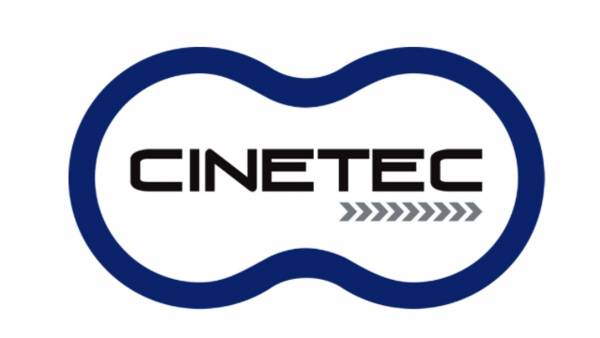To understand Latin America
by Julián Arcila
by Julián Arcila
by Ana María Restrepo
Some time later, the cinema had audio and the synchronized sound was incorporated technologically coupled with the image where voices, ambient sound, dialogue and music could be mixed. In this way the films began to fully reflect the meaning of cinema and the spectators understood perfectly the message of the story.
But sound is not only used to give life to the cinema, in bars, nightclubs, shopping centers, auditoriums and stadiums, among others, audio makes each space and each place full of vitality, information and entertainment. However, sometimes the sound that is used in these spaces or activities is misused and distorts what you really want to express.
Have you imagined being at a concert and not listening to the singer's voice? Or being in a hospital and not understanding his name when called? These and more are some of the problems that can be had if an audio system is not well configured or if the person who installs it does not have the necessary knowledge and experience.
Professional audio
The term professional audio can be used either to talk about the type of equipment that can be used, or to refer to the application as such of engineering.
Professional audio systems include speakers, microphones, mixing consoles, amplifiers, recording mechanisms, and others, which have properties and manufacturing quality far superior to common audio systems.
For its part, the professional audio application refers to professional audio engineering and operations such as radio transmission, audio mastering, sound consolidation as in a concert, DJ's performances, audio sampling, surround sound or ambient music, which make places and events more special.
This type of audio, which has special characteristics, can also be defined as high-performance audio, which in the words of Francisco Ortiz, designer of audio and video systems of the Colombian company Ingeniería Electroacústica, is nothing more than a sound system that is designed with the aim of meeting strict parameters of reliability and safety for the application that was designed, such as commercial and industrial sound, sound for entertainment, live sound and car audio.
Everything in its place
High-performance applications may vary depending on customer needs, for example, commercial and industrial audio is configured to be used in shopping malls, airports, transportation stations, call systems in factories and offices, auditoriums, conference rooms or convention centers. On the other hand, the sound for entertainment is installed according to the characteristics of the places, which can well be bars, discos, restaurants, nightclubs, theaters, theme parks or multi-zone systems for the home and high-end home theaters. However, it should be noted that the sound is different for live shows such as concerts or outdoor games or in stadiums and much more for cars, for which high-performance teams are now being created.
But professional audio systems must have characteristics that make them special and as such give them that category of "professional" or "high performance":
•Equipment of high mechanical resistance.
•Excellent frequency response (fidelity).
•Wiring and connectors of the highest quality.
•Must have a temperature protection system, as this is the main one
enemy of amplification.
•Maintenance of constant power of amplification at high temperatures in
case of failure of ventilation.
•The sources (microphones, CD, DVD, etc.) must be of good quality and brand to ensure a clean and stable signal, as well as pre-amplification (consoles, equalizers, processes, etc.).
These characteristics allow high-performance systems to achieve their mission, in such a way that, as Ortiz explains, there is peace of mind that the message, event or presentation is carried out without any setback given the quality and safety of the components and who installs them.
Meeting needs
All new creations or inventions have a why or a need that must be met, it also happens with professional audio systems, since no one wants their system to fail when they need it most. For many integrators or for the same customers, investing in high-performance equipment means spending a high sum of money very different from what would have been used in a conventional system, but after the person or company invests a lot of money and time in repairs of conventional low-performance equipment, it is discovered that it would have been much better to have a high-performance system from the beginning.
Also to work with this type of audio you must take into account the places or the type of event for which it is going to be used, because the audio for a musical is not the same as for a football match, or the sound in an open space than in a closed one.
It should be noted that not always, although you have a system installed on the stages, it is used in the same way, since its use varies depending on the needs of each show. In Colombia, for example, professional audio equipment can be found in auditoriums, nightclubs, bars, theaters, conference rooms and at home, according to Francisco.
Unlike conventional audio instruments, high-performance systems should not be integrated with equipment that is not of the same category if you want to maintain the quality and reliability of the system. In this regard, Ortiz affirms that this does not mean that there are no simple equipment of very high quality and very complex equipment of poor quality. He also states that "integration with video and lighting is very common today for example in video conference rooms, auditoriums, theaters, home theaters, nightclubs and others.
The management of these systems must be carried out by a sufficiently trained person in order to achieve the maximum performance of the equipment. It should also be noted that professional audio can be controlled analogously or digitally by means of wired or wireless touch-sensitive screens, also by means of a program installed on a PC and remotely by LAN or Internet.
One step forward
Latin America has always been characterized by receiving technology later than other regions, however in Latin America the audio and video industry has made surprising progress, so that many of the new equipment arrive relatively quickly and new technologies are easily incorporated.
Additionally, a high-tech culture is being created aimed primarily at the end customer, who has the final say on the reliability of a system, given the benefits it may or may not receive from it. In the same way, training and updates are being positioned in the region thanks to the activities carried out by InfoComm and some companies that have committed to the education of specialists and technicians in the industry.
For Francisco, the future of this technology is projected in greater integration with computer systems and the network. "Nowadays people dedicated to the assembly of such systems, must not only know about acoustics, audio, electronics, but also IP technology and networks in general," he says.
by Ana María Restrepo














